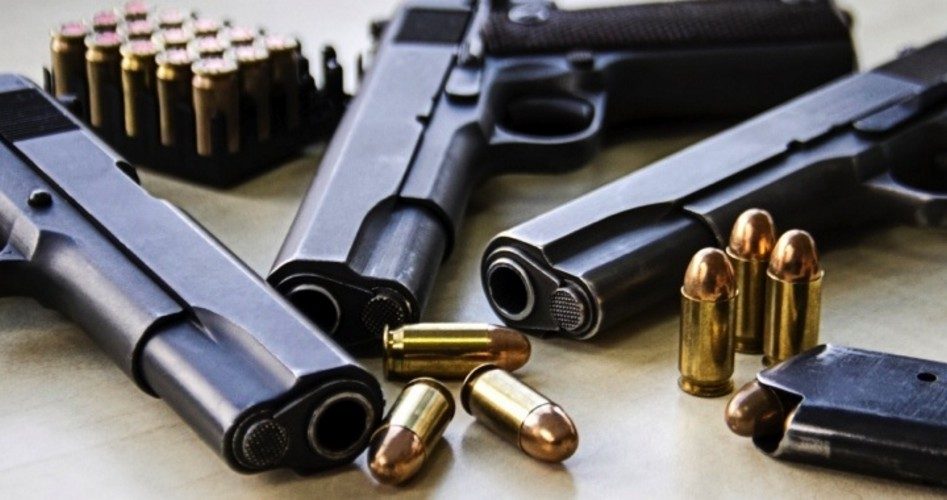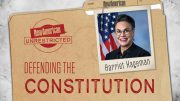
Following Sturm, Ruger & Company’s announcement last month that it would no longer be selling its semi-automatic handguns to California residents because of the state’s new microstamping law, Smith & Wesson announced on Wednesday, January 22, that it was following suit. From its press release, the company said:
Smith & Wesson does not and will not include microstamping in its firearms.
A number of studies have indicated that microstamping is unreliable, serves no safety purpose, is cost prohibitive and, most importantly, is not proven in preventing or solving crimes.
This will not totally remove either company’s products from the California market, however:
The microstamping mandate and the company’ unwillingness to adopt this so-called technology will result in a diminishing number of Smith & Wesson semi-automatic pistols available for purchase by California residents.
Previously, Sturm, Ruger said, “The ill-conceived law requiring the incorporation of microstamping technology into semi-automatic pistols is forcing Ruger pistols off the [California market].”
Microstamping has been promoted by anti-gun politicians ever since 1969 when then-president Lyndon Johnson recommended “a system of giving each gun a number and the development of some device to imprint this number on each bullet fired from the gun.” In simple terms, each gun and each cartridge fired from it would have a “fingerprint” which would then be entered into a national database which would be used, allegedly, to help police solve crimes. Baltimore Police Commissioner Frederick Bealefeld said the new microstamping technology recently developed “would just take us from the Stone Age to the jet age in an instant.”
But only if it worked, and only if it is constitutional. It doesn’t, and it isn’t.
The technology which would use lasers to imprint a code on both the firing pin of a pistol and also in its breech (the rear of the barrel holding the cartridge). Upon firing, the pin would imprint this unique alpha-numeric code onto the primer and onto the cartridge as it expanded during firing. Recovered cases from a crime scene could then be cross-checked with a national registry to determine the owner of the gun.
The problems with such a strategy are numerous, not the least of which is that it has the effect, by requiring new guns to use microstamping, of banning guns in California without explicitly banning them — a goal long sought by anti-gun politicians. As noted by David Kopel, a constitutional law professor at Denver University:
The technology doesn’t fully exist yet, but by making it into a law, they [California politicians have] enacted a gun law without actually passing one.
This is an indirect way to ban new handguns from being sold.
A 2008 National Academy of Sciences report said that there was serious question over whether those unique fingerprints would remain constant and consistent over time and after many rounds had been fired. Other studies have shown that the full code is readable only about half the time, and that many shell casings would have to be retrieved from a crime scene to improve their accuracy.
Additionally, criminals would be able to remove and replace the offending pins or deface the pin easily, further impeding any crime scene forensic analysis.
According to the Bureau of Alcohol, Tobacco, Firearms and Explosives (ATF), nine out of 10 guns used in crimes are stolen, so that knowing the original owner would likely be of little use in tracking the miscreants. Such a law would have the perverse effect of making home thefts more prevalent, and, since the law excludes law enforcement officials, increase the chance of weapons being stolen from police vehicles or those carrying them. And this further raises the stakes in that those law enforcement agencies themselves would be more likely to be involved in lawsuits as those weapons are traced back to them.
The list goes on. Revolvers don’t expel cartridges, so the microstamping law wouldn’t affect them. Neither would it impact pump-action, bolt-action, or level-action firearms unless the user deliberately operates the unloading mechanism.
But according to the FBI, three-quarters of violent crimes are not committed with guns. And left in place are the millions of existing weapons (at least so far) that aren’t affected by the new law.
There are other problems with the microstamping law. Even if such a plan worked, it would trace the cartridges back only to the last registered owner, not necessarily to the person who last fired the gun. Since most criminals steal their weapons, the process of discovering the microstamping would not lead to the criminal in most cases.
Also, criminals could simply retrieve the spent cases from the crime scene, or even take them from a firing range and “salt” crime scenes with spurious microstamped cases, leading investigators on wild goose chases with the likely invasion of innocents’ lives.
The real problem with the new microstamping law in California is the Second Amendment. The National Shooting Sports Foundation (NSSF) and the Sporting Arms and Ammunition Manufacturers Institute have filed a lawsuit against California, claiming that the new law is unconstitutional as it infringes on people’s right to keep and bear arms. This parallels another lawsuit being brought by Dick Heller, the defendant in the famous 2008 Supreme Court ruling District of Columbia v. Heller, called “Heller II,” claiming that the District of Columbia’s 17-step gun registration mandate “appears calculated to discourage persons from registering at all and, for those who do so, to scare them off with expiration and re-registration deadlines that, if missed, would turn them into criminals.”
In the original Heller case, it will be remembered, along with its sister case McDonald v. Chicago, it was clearly ruled that the Second Amendment applies to individuals; thus, efforts by California and the District of Columbia to restrict that right are doomed to fail. As Emily Miller, the Washington Times’ senior editor, noted, “Microstamping is simply a ban on guns. California and DC will have a short period to enjoy their gun grab until the courts rule that this dictate violates the Second Amendment.”
A graduate of Cornell University and a former investment advisor, Bob is a regular contributor to The New American magazine and blogs frequently at www.LightFromTheRight.com, primarily on economics and politics. He can be reached at [email protected].



